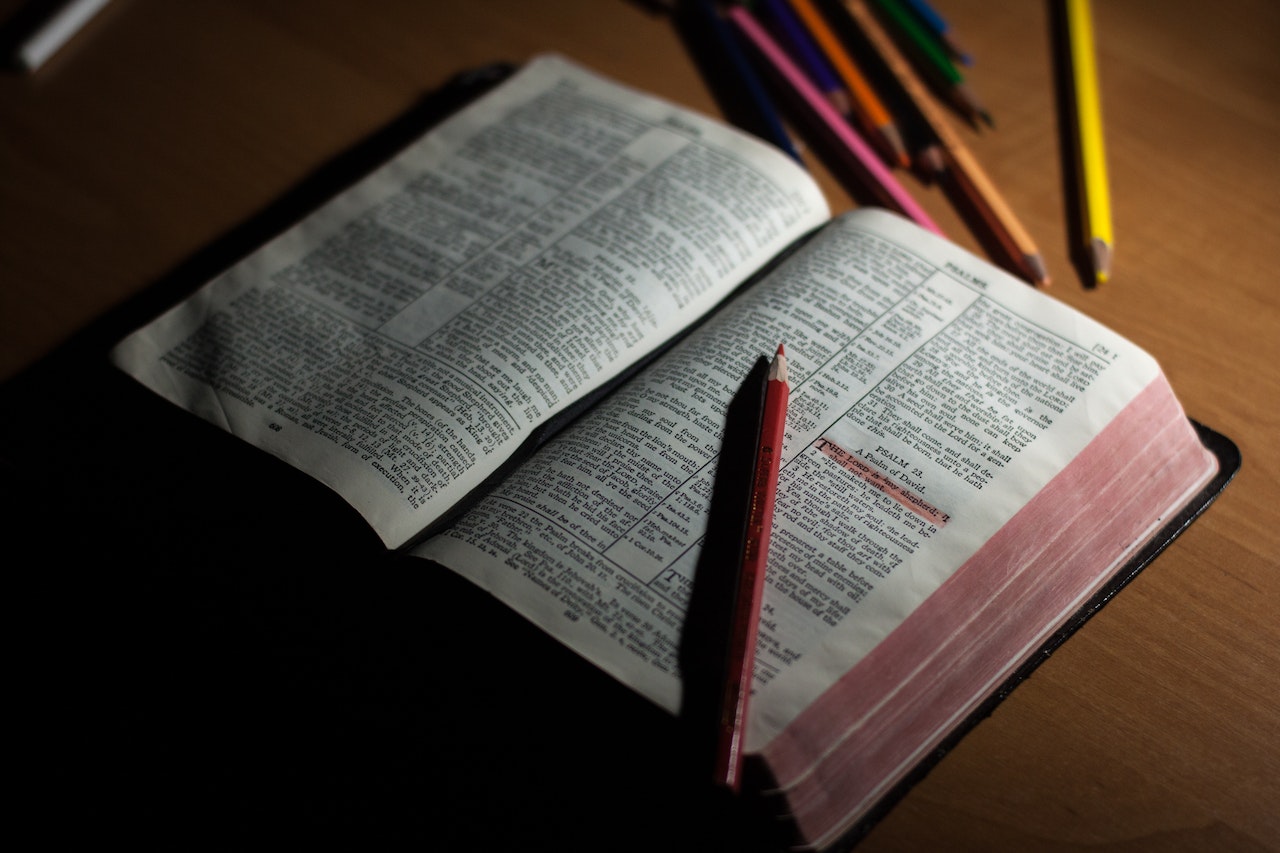The Orthodox Church did not have its own organized crusades like the Catholic Church did during the medieval period. However, there were instances where Orthodox Christians participated in the Crusades alongside their Catholic counterparts.
Table of Contents
Origins of the Orthodox Crusades
Did Orthodox Have Crusades?
When we think of the Crusades, we often associate them with the Catholic Church and its efforts to reclaim the Holy Land from Muslim control. However, what many people may not realize is that the Orthodox Church also had its own version of the Crusades. These Orthodox Crusades, although less well-known, played a significant role in shaping the history of Eastern Europe and the Byzantine Empire.
The origins of the Orthodox Crusades can be traced back to the 11th century when the Byzantine Empire was facing threats from both the Seljuk Turks and the Normans. In an effort to defend their lands and protect their Christian faith, the Byzantine emperors sought assistance from their fellow Orthodox Christians in the West.
One of the most notable examples of an Orthodox Crusade was the First Crusade of 1096. While this crusade is often associated with the Catholic Church, it also included a significant number of Orthodox Christians. These Orthodox warriors fought alongside their Catholic counterparts, united in their goal to reclaim Jerusalem from Muslim control.
The participation of Orthodox Christians in the First Crusade was not without its challenges. The Orthodox and Catholic churches had long-standing theological differences, and these differences sometimes led to conflicts and misunderstandings among the crusaders. However, despite these challenges, the Orthodox Christians played a crucial role in the success of the First Crusade.
Following the First Crusade, the Orthodox Crusades continued throughout the 12th and 13th centuries. These crusades were primarily focused on defending the Byzantine Empire from external threats, particularly from the Seljuk Turks and later the Ottoman Turks. The Orthodox warriors fought bravely to protect their lands and their faith, often facing overwhelming odds.
One of the most significant Orthodox Crusades during this period was the Fourth Crusade. This crusade, which began in 1202, was initially intended to help the Byzantine Empire regain control of Jerusalem. However, due to a series of political and military setbacks, the crusaders ended up sacking Constantinople, the capital of the Byzantine Empire. This event had a profound impact on the Orthodox Church and marked a turning point in the relationship between the Orthodox and Catholic churches.
Despite the setbacks and conflicts, the Orthodox Crusades left a lasting legacy on Eastern Europe. These crusades helped to strengthen the Byzantine Empire and protect Orthodox Christianity from external threats. They also played a role in shaping the cultural and political landscape of the region, as Orthodox Christians from different parts of Eastern Europe came together to fight for a common cause.
In conclusion, while the Orthodox Crusades may not be as well-known as their Catholic counterparts, they were a significant part of the history of Eastern Europe and the Byzantine Empire. These crusades were driven by a desire to defend the Orthodox faith and protect the lands of the Byzantine Empire. Despite the challenges and conflicts that arose, the Orthodox Christians fought bravely and left a lasting impact on the region. So, the next time you think of the Crusades, remember that the Orthodox Church also had its own version of these historic events.
Key Figures and Leaders in the Orthodox Crusades

The Orthodox Church is often associated with the Byzantine Empire, which was a major power in the medieval world. When we think of the Crusades, we usually picture knights in shining armor and the cross of the Catholic Church. But did the Orthodox Church have its own crusades? The answer is not as straightforward as you might think.
While the Orthodox Church did not have a formal crusade like the Catholic Church, it did play a significant role in the conflicts of the time. The Byzantine Empire, which was the heart of Orthodox Christianity, was constantly under threat from various enemies. In order to defend themselves, the Byzantines often sought help from Western powers, including the Catholic Church.
One of the key figures in the Orthodox Crusades was Emperor Alexios I Komnenos. He ruled the Byzantine Empire from 1081 to 1118 and faced numerous challenges during his reign. In 1095, he sent a letter to Pope Urban II, asking for assistance against the Seljuk Turks who were threatening his empire. This letter is often seen as the catalyst for the First Crusade.
While the Catholic Church responded to Alexios’ plea for help by launching the First Crusade, the Orthodox Church did not officially participate. However, many Orthodox Christians did join the crusade as individuals, fighting alongside their Catholic counterparts. This shows that there was a sense of unity among Christians, regardless of their denominational differences.
Another key figure in the Orthodox Crusades was Emperor Manuel I Komnenos, who ruled from 1143 to 1180. He also faced threats from the Seljuk Turks and sought assistance from the West. In 1171, he signed a treaty with the Holy Roman Emperor Frederick I Barbarossa, which allowed Western forces to pass through Byzantine territory on their way to the Holy Land.
While these alliances with Western powers were necessary for the survival of the Byzantine Empire, they also had their drawbacks. The presence of Western forces in Byzantine territory often led to tensions between the Orthodox and Catholic Churches. The sack of Constantinople during the Fourth Crusade in 1204 is a prime example of this, as Catholic crusaders looted and desecrated Orthodox churches and icons.
Despite these tensions, there were also instances of cooperation between the Orthodox and Catholic Churches during the Crusades. For example, during the Siege of Antioch in 1098, the Orthodox bishop of the city, Peter Bartholomew, played a crucial role in the Christian victory. His relics were later venerated by both Orthodox and Catholic Christians.
In conclusion, while the Orthodox Church did not have its own formal crusade, it did play a significant role in the conflicts of the time. Orthodox leaders sought assistance from Western powers and many Orthodox Christians joined the crusades as individuals. However, tensions between the Orthodox and Catholic Churches also arose during this period. The Orthodox Crusades, though not as well-known as their Catholic counterparts, are an important part of medieval history and highlight the complex relationships between different Christian denominations.
Impact of the Orthodox Crusades on Byzantine Empire
The Byzantine Empire, with its capital in Constantinople, was a powerful and influential force in the medieval world. It was a center of trade, culture, and religion, and its rulers saw themselves as the rightful heirs to the Roman Empire. However, the Byzantines were not immune to the conflicts and upheavals of the time, and one of the most significant events in their history was the Crusades.
When we think of the Crusades, we often picture knights in shining armor, marching off to the Holy Land to fight against the Muslims. But what many people don’t realize is that the Byzantines also played a crucial role in these holy wars. In fact, they had their own version of the Crusades, known as the Orthodox Crusades.
The Orthodox Crusades were a series of military campaigns launched by the Byzantine Empire against various enemies, both foreign and domestic. These campaigns were driven by a combination of religious fervor, political ambition, and the desire to protect Byzantine interests. While they were not as well-known or as extensive as the Western Crusades, they had a significant impact on the Byzantine Empire.
One of the most significant impacts of the Orthodox Crusades was the strain they placed on the Byzantine economy. The cost of maintaining armies, fortifications, and supply lines was immense, and the constant warfare drained the empire’s resources. This led to increased taxation and economic hardship for the Byzantine people, which in turn fueled discontent and instability.
Another impact of the Orthodox Crusades was the erosion of Byzantine power and influence. The empire was already facing threats from the Seljuk Turks in the east and the Normans in the west, and the Crusades only added to these challenges. The Byzantines often found themselves caught between rival Crusader factions, who saw the empire as a means to their own ends. This weakened the Byzantine position and made it more difficult for them to defend their territories.
The Orthodox Crusades also had a profound impact on the Byzantine relationship with the Western Christian powers. While the Byzantines initially welcomed the Crusaders as allies against the Muslims, their relationship quickly soured. The Western Crusaders viewed the Byzantines as heretics and saw their empire as a potential prize to be conquered. This led to numerous conflicts and betrayals, further weakening the Byzantine position and sowing the seeds of mistrust between the Eastern and Western Christian worlds.
Despite these challenges, the Byzantines were able to survive and even thrive in the aftermath of the Orthodox Crusades. They adapted their military tactics, strengthened their fortifications, and forged alliances with other powers in the region. They also continued to play a crucial role in the cultural and intellectual life of the medieval world, preserving and transmitting the knowledge of the ancient Greeks and Romans.
In conclusion, while the Orthodox Crusades may not be as well-known as their Western counterparts, they had a significant impact on the Byzantine Empire. They strained the economy, weakened Byzantine power, and strained relations with the Western Christian powers. However, the Byzantines were able to adapt and survive, leaving a lasting legacy that continues to influence our world today.
Religious Motivations and Justifications for the Orthodox Crusades
Did Orthodox Have Crusades?
When we think of the Crusades, we often associate them with the Catholic Church and its efforts to reclaim the Holy Land from Muslim control. However, it is important to note that the Orthodox Church also played a significant role in these holy wars. While the Orthodox Crusades may not be as well-known or extensively studied as their Catholic counterparts, they were motivated by similar religious justifications.
The Orthodox Crusades were driven by a desire to protect and expand the influence of the Eastern Orthodox Church. Just like the Catholic Church, the Orthodox Church believed that the Holy Land, particularly Jerusalem, held immense religious significance. It was the birthplace of Christianity and the site of Jesus Christ’s crucifixion and resurrection. Therefore, the Orthodox Church felt a deep spiritual connection to this land and sought to defend it from non-Christian forces.
One of the most notable Orthodox Crusades was the Fourth Crusade, which took place in the early 13th century. This crusade was initially intended to recapture Jerusalem from Muslim control, but it took an unexpected turn. Instead of heading to the Holy Land, the crusaders diverted their attention to Constantinople, the capital of the Byzantine Empire and the center of Orthodox Christianity.
The sacking of Constantinople by the crusaders was a devastating blow to the Orthodox Church. Many religious artifacts and treasures were looted or destroyed, and the city itself was left in ruins. This event strained the relationship between the Catholic and Orthodox Churches, as the Orthodox Church felt betrayed by their Christian brethren.
Despite this unfortunate incident, the Orthodox Church continued to participate in subsequent Crusades. These holy wars were seen as a way to defend Christianity and protect the interests of the Eastern Orthodox Church. The Orthodox Crusaders fought alongside their Catholic counterparts, united by a common goal of reclaiming the Holy Land.
It is important to note that the motivations behind the Orthodox Crusades were not solely religious. Like the Catholic Church, the Orthodox Church also had political and economic interests in mind. The Crusades provided an opportunity for the Orthodox Church to expand its influence and gain more power in the region. Additionally, participating in the Crusades allowed the Orthodox Church to forge alliances with other Christian powers, such as the Catholic Church and various European kingdoms.
In conclusion, the Orthodox Church did have its own Crusades, although they may not be as well-known as the Catholic Crusades. These holy wars were driven by religious motivations, as the Orthodox Church sought to protect and expand its influence in the Holy Land. Despite the unfortunate events of the Fourth Crusade, the Orthodox Church continued to participate in subsequent Crusades, fighting alongside their Catholic brethren. It is important to recognize the role of the Orthodox Church in the Crusades and understand the complex motivations behind their involvement.
Conclusion
Yes, the Orthodox Church did have its own version of crusades, known as the Eastern Crusades. These military campaigns were launched by Western European powers against various Eastern Orthodox Christian states and territories, particularly during the late medieval period. The Eastern Crusades were driven by religious, political, and economic motivations, and resulted in significant conflicts and tensions between the Orthodox and Catholic Churches. In conclusion, the Orthodox Church did experience its own crusades, albeit in a different context and with different dynamics compared to the more well-known Western Crusades.



